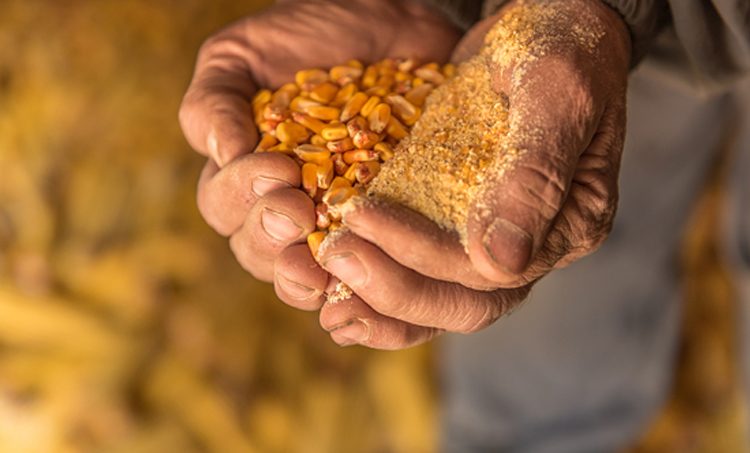
The corn storage warehouse should have good airtightness, ventilation, heat insulation, and moisture-proof performance, so that it does not leak from the top and the bottom is not damp, the three-proof facilities are complete, and the warehouse capacity should not be too large.
Main points of work during corn warehousing:
1. Control the warehousing quality and reasonably control the stacking height
According to the corn purchasing and storage strategy, the quality inspection of corn entering the warehouse is strictly controlled, and the five separate principles of "different moisture, different grades, different varieties, different ages, and insects and no insects" are adopted and stored separately in different ways. Those that meet the safety moisture standards should be sealed immediately after being full; high-moisture corn that does not meet the requirements is temporarily stored according to the principle of "the higher the moisture, the more impurities, and the corresponding reduction in pile height".
2. Strictly control the batch moisture difference and temperature difference
For corn stored in the same storage at different times and in different batches, the difference in water content of different batches should be strictly controlled. Generally, the difference in water content should be controlled within 1. Even if the average water content is within the safe water level, the difference in water content should not exceed 2. For tall and large bungalows with long storage time and large temperature difference, the gap between people and grain at night can be used to balance the temperature difference of grain piles by means of mechanical ventilation to prevent internal condensation.
3. Control the impurity content in the grain pile
The impurity content in the grain pile directly affects the effect of mechanical ventilation and fumigation. The large impurity content will increase the ventilation resistance, which is not conducive to the penetration of chemical agents. In particular, the accumulation of organic impurities can easily absorb moisture and cause microbes and pests to breed, and generate high temperature areas in the grain pile. For this reason, the corn impurities must be strictly controlled below 1.
4. Pay attention to the maintenance of storage equipment and the monitoring of grain conditions
Use the advantages of storage facilities to ensure that the ventilation system is unblocked, and the monitoring system is used in a targeted manner to monitor the storage of grain at any time and make timely adjustments.
Safety management after corn storage:
1. Do a good job of monitoring and recording grain conditions, and deal with them in a timely manner
After the corn warehouse is completed, it is necessary to promptly deploy temperature and humidity measurement systems, organize personnel to conduct a comprehensive general survey of the grain situation, partition and layer fixed-point sampling, and detect the moisture, insect pests and various quality indicators of the grain, and do a good job of the basic grain situation record of. Increase temperature detection points and increase the frequency of temperature detection in areas with high water content, accumulation of impurities, and pest occurrence areas to ensure that abnormal grain conditions are discovered and dealt with in time.
2. According to actual conditions, scientifically cool down and ventilate
For corn with large temperature difference or high moisture content, and no safe storage requirements, it is necessary to formulate a scientific and reasonable ventilation plan, correctly grasp the ventilation timing, and use ventilation methods and methods reasonably to improve the ventilation effect and avoid condensation and heat.
3. Do a good job of heat insulation, and carry out circulation fumigation at an appropriate time
For the summer corn, after entering the warehouse, the grain pile should be covered and sealed before the temperature rises. When the grain temperature reaches 15 ℃ or higher, chemical fumigation should be carried out to inhibit the breeding of insects and mildew. Equipped with a warehouse with circulation fumigation and good airtightness, the corn moisture is within the safe moisture, and the dosage of 2 g~3 g/m 3 is applied. For grain silos that are sealed or covered with film, special attention should be paid to the inspection of upper grain conditions after fumigation and during the change of seasons to prevent roof formation.
4. Do a good job of daily inspection of corn
It is best to check corn once a day, and use sensory methods such as nose smell, hand grip, eye sight, and foot step to quickly judge the grain situation. Smell it with your nose, if there is a sweet smell, it is the initial sign of corn fever; hold it with your hands, it feels damp and sticky, indicating that the corn in the warehouse has high moisture and there are signs of condensation; with eyes, mainly check whether the temperature rises Check whether there is condensation and hardening on the grain surface with your feet. Focus on the parts that are prone to heat, insects, and mildew, and find the problems in time and deal with them as soon as possible.

